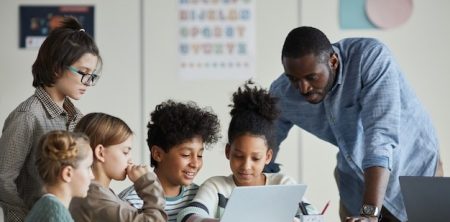Contemporary education research has increasingly focused on how teachers can optimize learning environments by understanding the cognitive mechanisms behind knowledge acquisition. This research has revealed fascinating insights into why kids animated shows prove so remarkably effective as educational tools. The combination of vibrant visuals, engaging narratives, memorable characters, and strategic repetition creates a perfect storm for capturing and maintaining young learners’ attention while facilitating deep comprehension and retention.
The neuroscience behind this phenomenon reveals that when children watch quality animated content, multiple brain regions activate simultaneously. Visual processing centers engage with the colorful imagery, language areas process the dialogue, emotional centers connect with character experiences, and memory systems work to integrate new information with existing knowledge. This multi-modal brain activation creates stronger neural pathways than single-mode learning experiences, resulting in more durable learning outcomes that persist long after viewing.
Cognitive development researchers have identified several key factors that make animated content particularly suited to young minds. First, the medium naturally accommodates the limited attention spans of children by presenting information in brief, engaging segments that maintain interest without overwhelming cognitive resources. Second, the combination of visual and auditory information caters to different learning preferences, making content accessible to diverse learners. Finally, the narrative structure helps children organize information in meaningful ways that enhance recall.
The concept of “edutainment” has evolved significantly since its inception, with today’s animated educational content reflecting sophisticated understanding of how children learn. Modern shows carefully balance entertainment value with educational objectives, recognizing that engagement is a prerequisite for effective learning. When children are genuinely absorbed by content they find enjoyable, they remain receptive to embedded educational messages without experiencing the learning process as laborious or forced.
Working memory limitations in young children present challenges for educators, as developing minds can only hold a small amount of new information at once. Well-designed animated shows address this constraint by breaking complex concepts into manageable chunks, using repetition strategically, and connecting new ideas to familiar contexts. These techniques prevent cognitive overload while steadily building conceptual understanding over time through multiple exposures.
Attention research has demonstrated that children allocate cognitive resources most effectively when information is presented in novel, surprising, or emotionally engaging ways. Animation excels at creating such moments through character reactions, unexpected plot developments, and visually dynamic sequences. These attention-grabbing elements serve as anchors for important educational content, ensuring that key concepts receive sufficient cognitive processing to transfer into long-term memory.
Language acquisition occurs naturally as children engage with the rich linguistic environment provided by quality animated programming. Research shows that children can learn vocabulary from appropriate media exposure, particularly when new words are introduced in meaningful contexts and repeated across multiple episodes. The combination of visual cues, emotional engagement, and narrative context creates optimal conditions for expanding language skills through incidental learning.
Executive function development—including skills like focusing attention, controlling impulses, and switching between tasks—benefits from specific types of animated content. Shows that encourage viewer participation, present problems to solve, or require remembering information across episodes help strengthen these crucial cognitive abilities. These executive skills form the foundation for academic success and self-regulation throughout childhood and beyond.
Motivation theory explains why animated characters can inspire learning in ways that traditional instruction sometimes cannot. When children identify with characters who demonstrate curiosity, perseverance, and growth mindset, they’re more likely to adopt similar attitudes toward learning. This emotional connection creates intrinsic motivation that drives deeper engagement with educational content than external rewards or requirements typically achieve.
Memory formation and retention improve when information is embedded in engaging narratives rather than presented as isolated facts. The storytelling elements in animated shows provide context and emotional connections that help children organize and remember information. Additionally, the recurring characters and settings create a familiar framework where new knowledge can be efficiently integrated with existing mental schemas.
Social learning theory, pioneered by psychologist Albert Bandura, helps explain why children readily adopt behaviors modeled by animated characters. When these characters demonstrate positive learning behaviors like asking questions, making predictions, or working through challenges, young viewers often imitate these approaches in their own learning activities. This modeling effect makes cartoon characters powerful ambassadors for academic and social-emotional skills alike.
Cognitive load management represents one of the most significant advantages of well-designed animated content. By controlling the pace of information presentation, highlighting key concepts visually, and removing extraneous details, quality educational animation optimizes cognitive resources for meaningful learning. This careful calibration helps children focus on essential information without becoming overwhelmed by complexity.
The spacing effect, a robust finding in cognitive psychology, suggests that learning is more effective when spread over time rather than concentrated in single sessions. Episodic animated shows naturally implement this principle, revisiting core concepts across multiple episodes with slight variations. This distributed practice reinforces learning without creating the fatigue associated with massed practice approaches.
Multimedia learning principles developed by educational psychologist Richard Mayer provide guidelines for effective educational animation. These include presenting words and images simultaneously rather than sequentially, eliminating extraneous content, highlighting essential information, and presenting content in learner-paced segments. Shows that adhere to these principles demonstrably improve comprehension and transfer of knowledge to new situations.
Transfer of learning—applying knowledge gained in one context to new situations—represents the ultimate goal of education. Research suggests that animation can facilitate this transfer when it presents concepts in multiple contexts and explicitly highlights underlying principles. When teachers build upon these foundations by connecting animated examples to classroom activities and real-world applications, they maximize the educational potential of these engaging resources.

